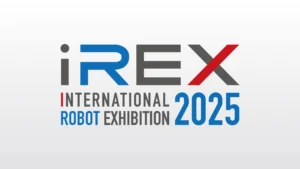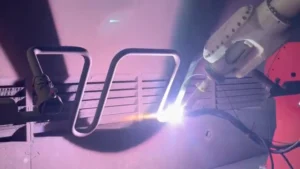table of contents
- Heading 1
- Heading 1
- Heading 1
share this
Robots are deployed in automotive manufacturing for various applications, including heavy lifting, welding, robotic vision, and many more. Yet, how much of the automation worked?
In part 1, we discussed how Mercedes-Benz did with automation. The luxury car manufacturer integrated robots into their workplace but failed to realize that mass customization can be done faster by a human than a robot.
In this article, we will discuss what Tesla has done to automate and how efficient it was.
Case Study 2: Tesla’s Gigafactories
Elon Musk, the founder of Tesla, has a grand scheme to automate the entire production line for its electric cars. Many touted it as too ambitious. After 2 years of its inception, how much of it actually worked?
What Worked: Rapid Development Using Agile Framework
Situated in Silicon Valley, Tesla has adopted the notion of “scale first, fix later”. This relatively new car manufacturer forgo-ed trial productions, long development cycles and dived straight into full-scale production. Essentially, they took agile software development ideals into the automotive industry. [1]

With this rapid scaling progress, Tesla factories became highly automated in a short amount of time and are now on par with its competitors.
What Didn’t: Finer Details Still Require Humans
While the agile framework allowed Tesla to scale at a phenomenal speed, it led to them being too ambitious in their automation process.
“Excessive automation at Tesla was a mistake,” Musk tweeted. “To be precise, my mistake. Humans are underrated.”
Some tasks are easy for humans to execute but tough for a robot with today’s technology. The details, such as tough wiring harnesses, required manoeuvring across the car body frame, which is a simple task for a human but tough to program on a robot. Unfortunately, robots are unable to orientate themselves to attach items like nuts and bolts or to move between the car frame. For Tesla, even a small issue can cause the assembly line to halt.

The missing piece to full automation in Tesla is in the robots’ software and programming.
Machine learning and artificial intelligence today is still not capable of completely replicating the intelligence and adaptability of a human. With further advancements in the systems that run these robots, the current difficult tasks faced by robots will be made more manageable eventually. Overestimating the capability of the robots was the main mistake in Tesla’s execution.
As a result, Tesla experienced numerous production delays to fix the areas where the robots failed.
Key Takeaway
Tesla made the choice to scale quickly and fix problems later, adopting the popular Agile framework, to move fast and break things. This brought about faster technological advancement, and rapid scaling to be on equals with competitors that have existed for hundreds of years.
At the same time, this method led to the failure of optimizing the process before applying it, causing many losses. Unlike software which can be updated with a click of a button, these physical cars have to be brought back to the factories to be installed with the latest updates.
Whether Tesla is ahead of its time for envisioning a fully automated factory – deploying only robots, only time will tell. As technology progresses, the software and programming needed for 100% automation may not be too far into the future after all.
Part 3: Toyota|
In the last part of this series, we will look into Toyota, and how they prioritised process over automation and whether that worked for them.
Follow Augmentus on Linkedin, Facebook to be updated for the next part of this three-part series.
About Augmentus
Augmentus offers a no-code and fully-integrated robotic programming software that enables anyone, even those with no robotic experience, to program dynamic industrial robots in minutes. Our proprietary technology incorporates an intuitive graphical interface on an iPad that eliminates the need for coding and CAD files in robot teaching. Companies using Augmentus have experienced up to 70% cost reduction and 17 times faster deployments across a wide variety of applications, such as spraying, palletizing, welding, and inspections. Augmentus ushers in a new era of human-machine interface, democratizing robotic automation.
Book a demo now to experience it.
References
- [1]Tesla Has Applied Agile Software Development To Automotive Manufacturing
https://cleantechnica.com/2018/09/01/tesla-has-applied-agile-software-development-to-automotive-manufacturing/”>https://cleantechnica.com/2018/09/01/tesla-has-applied-agile-software-development-to-automotive-manufacturing/




